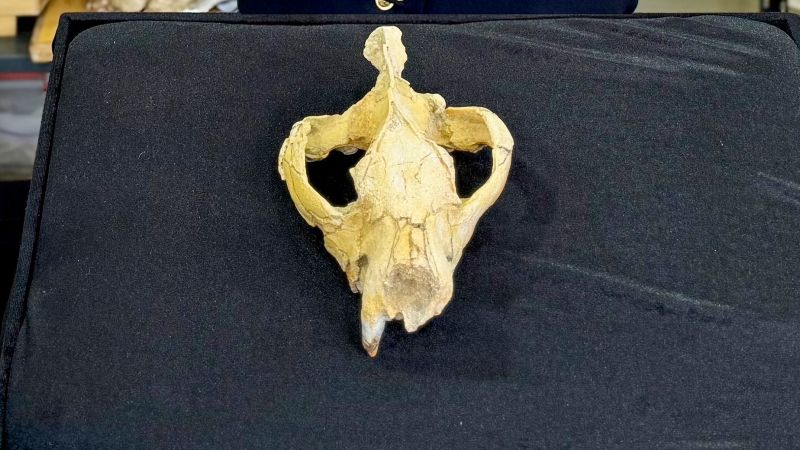The fascinating world of paleontology has once again unveiled a remarkable discovery that may help scientists piece together the evolutionary puzzle of ancient carnivores. An international team of paleontologists has recently unearthed a nearly complete skull of an unidentified species within the hyaenodont family, which presents an exciting opportunity to shed light on a lineage that was once a dominant predator on Earth but mysteriously disappeared around 25 million years ago. This finding, emerging from the arid landscape of the Fayum Depression in Egypt’s Western Desert, not only heightens the intrigue surrounding these ancient carnivores but also raises questions about their extinction.
Hyaenodonts, characterized by their sharp, catlike teeth alongside a doglike body structure, were apex predators during their reign. The fossilized skull, which dates back to roughly 30 million years ago and belongs to the subfamily Hyainailourinae, is remarkably well-preserved—the finest example of its kind found in Africa to date. The documentation of this discovery, published in the *Journal of Vertebrate Paleontology*, has the potential to provide essential insights into the evolutionary history of these ferocious creatures.
Lead author Shorouq Al-Ashqar, a doctoral student at the Mansoura University Vertebrate Paleontology Center and research assistant at the American University in Cairo, described the moment of finding the skull in 2020 as exhilarating. The excitement among the team members was palpable, highlighting the significant implications that such a finding could have for our understanding of hyaenodonts. Al-Ashqar noted the importance of having a complete and three-dimensional skull, particularly for the species now named *Bastetodon syrtos*. This name pays homage to the ancient Egyptian goddess Bastet, depicted as having a lioness’s head, emphasizing the unique features of this new carnivore related to its shorter snout.
The discovery of *Bastetodon* provides a glimpse into the ancient ecosystems that existed during a time marked by significant environmental changes. During the early Oligocene epoch, the Fayum Depression was a lush tropical rainforest, rich in diverse fauna. The environmental context suggests that *Bastetodon* likely preyed upon various animals, including early primates like *Aegyptopithecus*, antecedents of modern humans, along with early hippos and elephants—a testament to the predator’s formidable position within its ecosystem.
Paleontologists have noted that ancient carnivore fossils are relatively rare, leading to gaps in our understanding of these creatures’ ecological roles. Generally, fewer carnivores exist in ecosystems compared to herbivores, and remains are often limited to teeth or fragments. This complete skull of *Bastetodon* provides an unprecedented opportunity to analyze the animal’s anatomy and understand the evolutionary advantages that may have allowed hyaenodonts to thrive before their eventual decline.
Moreover, researchers compared the *Bastetodon* skull with fossils of a larger hyaenodont species named *Sekhmetops*, which had been discovered approximately 120 years ago. This comparison revealed a shared lineage between the two, indicating that both species belonged to an African hyaenodont lineage. This connection underscores the significance of geographical factors in evolutionary history and carnivore adaptation.
The extinction of hyaenodonts coincided with dramatic shifts in climate and habitat, leading to mass extinction events that restructured the ecological balance of the time. Dr. Cathrin Pfaff, a postdoctoral researcher at the Institute of Paleontology at the University of Vienna, emphasized the impact of changing climates and ecosystems on carnivores, hinting at possible reasons for the decline of creatures like *Bastetodon*. As scientists continue to explore these ancient environments through fossil records, our grasp of the evolutionary pressures that drive species survival or extinction continues to grow more robust, inching closer to understanding the well-maintained enigma of why the hyaenodonts ultimately vanished.
In essence, the discovery of *Bastetodon syrtos* not only enriches our understanding of predators from an earlier epoch but also serves as a reminder of the intricate tapestry of life that once thrived on Earth and the myriad factors that affect species endurance through time. Each fossil serves as a crucial narrative in the ongoing story of evolution, telling tales of adaptation, competition, and survival amid the ever-changing landscapes of prehistoric fauna.



